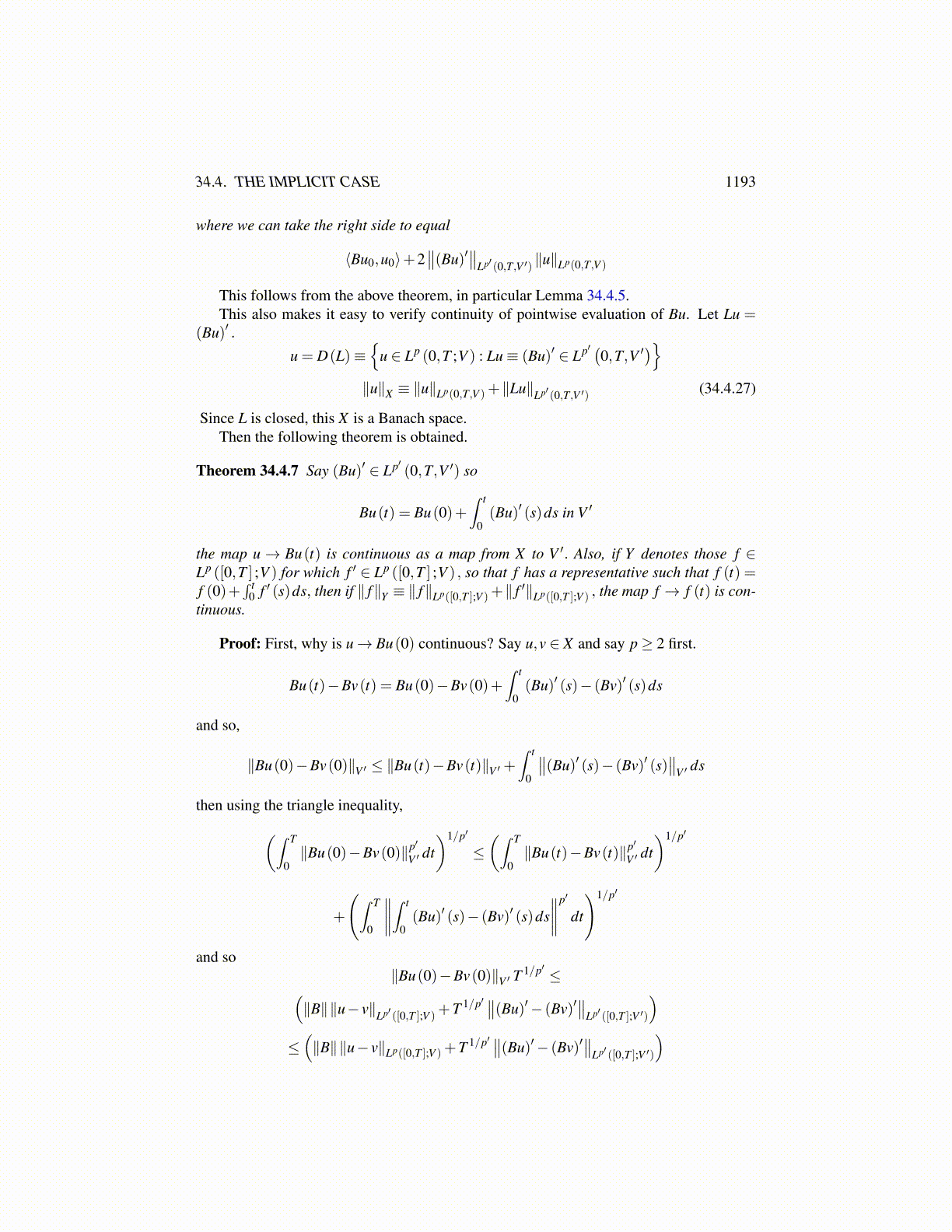
34.4. THE IMPLICIT CASE 1193
where we can take the right side to equal
⟨Bu0,u0⟩+2∥∥(Bu)′
∥∥Lp′ (0,T,V ′) ∥u∥Lp(0,T,V )
This follows from the above theorem, in particular Lemma 34.4.5.This also makes it easy to verify continuity of pointwise evaluation of Bu. Let Lu =
(Bu)′ .
u = D(L)≡{
u ∈ Lp (0,T ;V ) : Lu≡ (Bu)′ ∈ Lp′ (0,T,V ′)}∥u∥X ≡ ∥u∥Lp(0,T,V )+∥Lu∥Lp′ (0,T,V ′) (34.4.27)
Since L is closed, this X is a Banach space.Then the following theorem is obtained.
Theorem 34.4.7 Say (Bu)′ ∈ Lp′ (0,T,V ′) so
Bu(t) = Bu(0)+∫ t
0(Bu)′ (s)ds in V ′
the map u→ Bu(t) is continuous as a map from X to V ′. Also, if Y denotes those f ∈Lp ([0,T ] ;V ) for which f ′ ∈ Lp ([0,T ] ;V ) , so that f has a representative such that f (t) =f (0)+
∫ t0 f ′ (s)ds, then if ∥ f∥Y ≡ ∥ f∥Lp([0,T ];V )+∥ f ′∥Lp([0,T ];V ) , the map f → f (t) is con-
tinuous.
Proof: First, why is u→ Bu(0) continuous? Say u,v ∈ X and say p≥ 2 first.
Bu(t)−Bv(t) = Bu(0)−Bv(0)+∫ t
0(Bu)′ (s)− (Bv)′ (s)ds
and so,
∥Bu(0)−Bv(0)∥V ′ ≤ ∥Bu(t)−Bv(t)∥V ′ +∫ t
0
∥∥(Bu)′ (s)− (Bv)′ (s)∥∥
V ′ ds
then using the triangle inequality,(∫ T
0∥Bu(0)−Bv(0)∥p′
V ′ dt)1/p′
≤(∫ T
0∥Bu(t)−Bv(t)∥p′
V ′ dt)1/p′
+
(∫ T
0
∥∥∥∥∫ t
0(Bu)′ (s)− (Bv)′ (s)ds
∥∥∥∥p′
dt
)1/p′
and so∥Bu(0)−Bv(0)∥V ′ T
1/p′ ≤(∥B∥∥u− v∥Lp′ ([0,T ];V )
+T 1/p′ ∥∥(Bu)′− (Bv)′∥∥
Lp′ ([0,T ];V ′)
)≤(∥B∥∥u− v∥Lp([0,T ];V )+T 1/p′ ∥∥(Bu)′− (Bv)′
∥∥Lp′ ([0,T ];V ′)
)